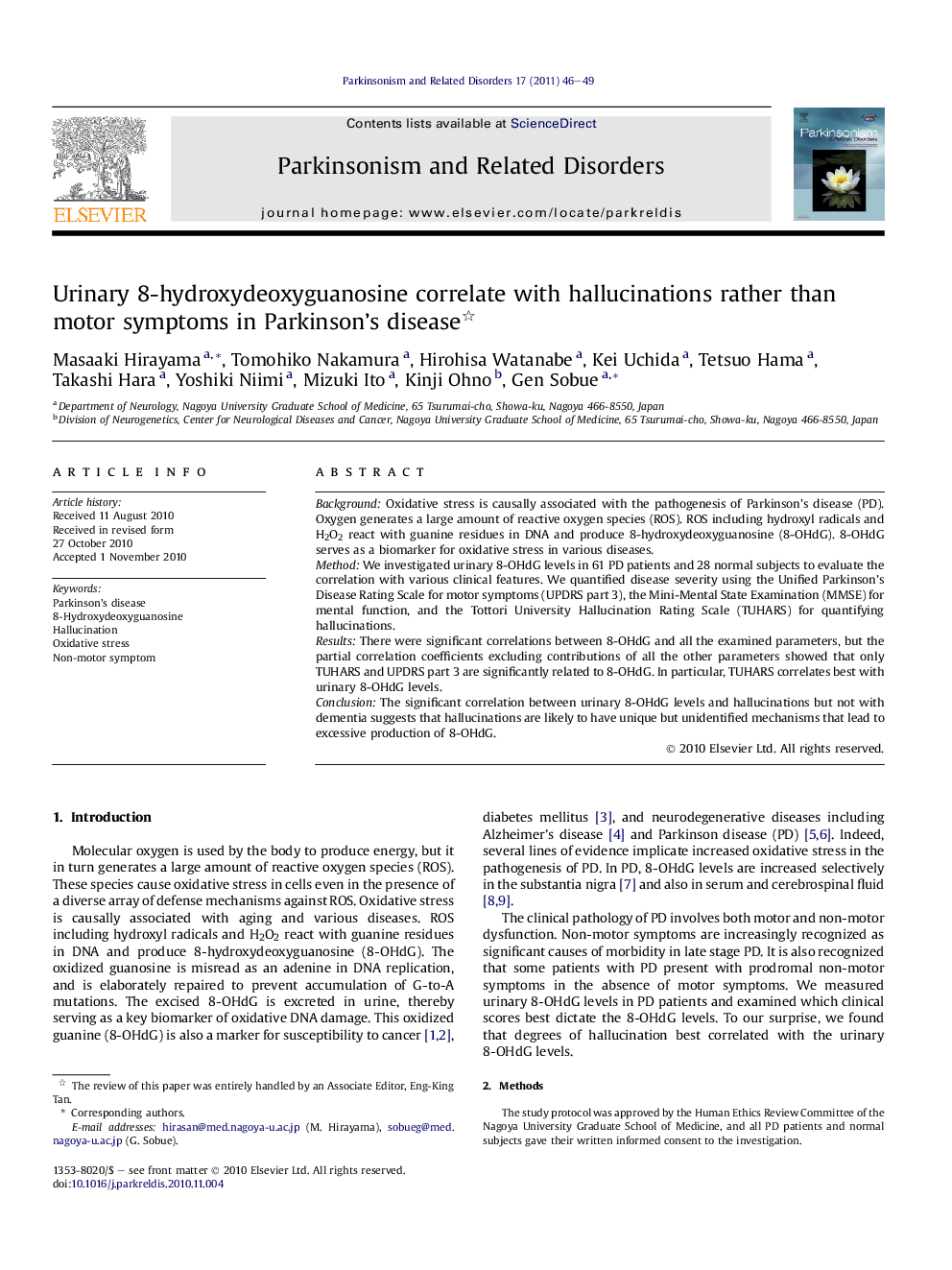| Article ID | Journal | Published Year | Pages | File Type |
|---|---|---|---|---|
| 1920795 | Parkinsonism & Related Disorders | 2011 | 4 Pages |
BackgroundOxidative stress is causally associated with the pathogenesis of Parkinson’s disease (PD). Oxygen generates a large amount of reactive oxygen species (ROS). ROS including hydroxyl radicals and H2O2 react with guanine residues in DNA and produce 8-hydroxydeoxyguanosine (8-OHdG). 8-OHdG serves as a biomarker for oxidative stress in various diseases.MethodWe investigated urinary 8-OHdG levels in 61 PD patients and 28 normal subjects to evaluate the correlation with various clinical features. We quantified disease severity using the Unified Parkinson’s Disease Rating Scale for motor symptoms (UPDRS part 3), the Mini-Mental State Examination (MMSE) for mental function, and the Tottori University Hallucination Rating Scale (TUHARS) for quantifying hallucinations.ResultsThere were significant correlations between 8-OHdG and all the examined parameters, but the partial correlation coefficients excluding contributions of all the other parameters showed that only TUHARS and UPDRS part 3 are significantly related to 8-OHdG. In particular, TUHARS correlates best with urinary 8-OHdG levels.ConclusionThe significant correlation between urinary 8-OHdG levels and hallucinations but not with dementia suggests that hallucinations are likely to have unique but unidentified mechanisms that lead to excessive production of 8-OHdG.
